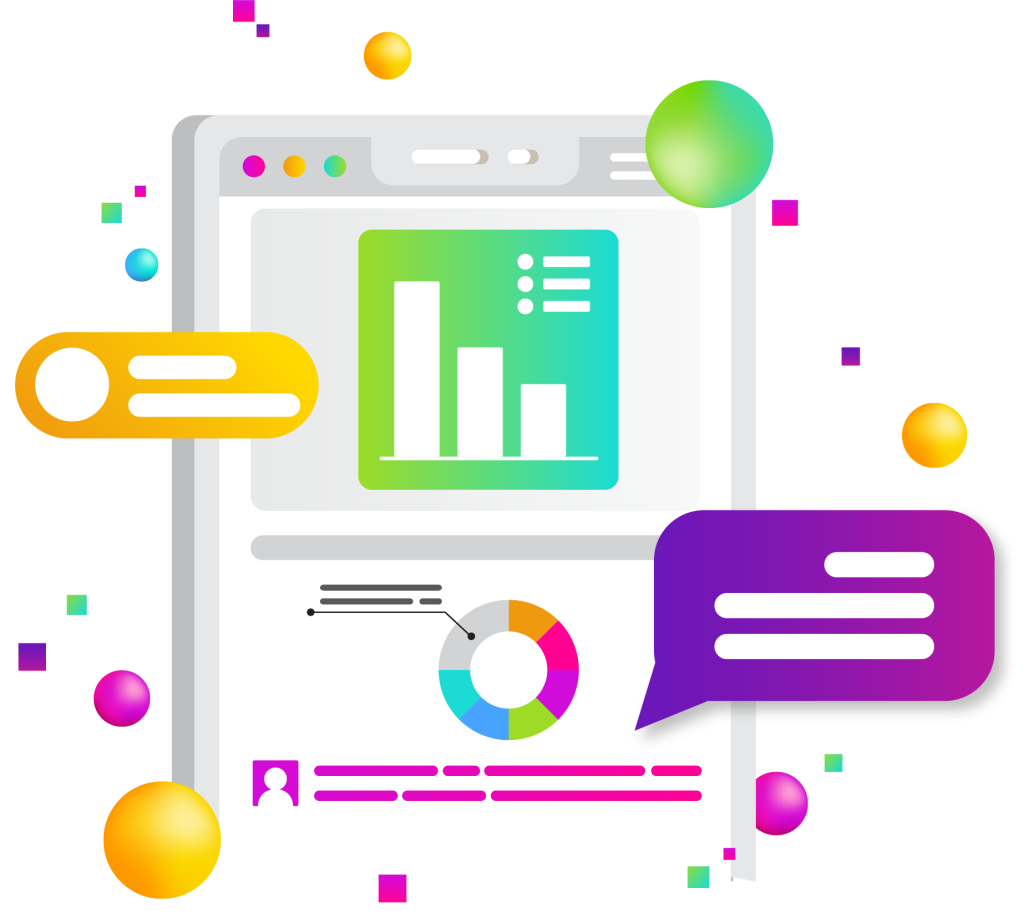
A website’s first impression can make or break a brand’s connection with its audience. As attention spans continue to shrink, capturing and maintaining user interest has become increasingly challenging. Custom animations offer a powerful solution, transforming static websites into dynamic, engaging platforms that enhance user experience and convey a brand’s personality.
Why Custom Animations Matter
Improved User Engagement
Custom animations are more than just eye candy; they play a crucial role in engaging users. When done correctly, animations can draw attention to key areas of a webpage, guide users through a process, or provide visual feedback that encourages further interaction. For example, a subtle bounce effect on a button can entice users to click, while a well-timed loading animation can make waiting feel less tedious. These micro-interactions help keep users on the site longer, increasing the likelihood of conversion.
Brand Personality
Animations are an excellent way to inject your brand personality into a website. They can reflect a brand’s tone and style, making the user experience more memorable. For instance, a playful animation might suit a children’s toy store, while sleek, minimal animations could complement a luxury fashion brand. By aligning animations with brand values, businesses can create a cohesive and immersive experience that resonates with their audience.
Enhanced User Experience
Beyond aesthetics, animations significantly contribute to the overall user experience. They can make navigation more intuitive, signal the completion of actions, and provide feedback that reassures users they are on the right track. For example, a smooth transition between pages can create a sense of continuity, reducing the cognitive load on users and making their journey through the site more enjoyable.
Types of Animations for Websites
Micro-interactions
Micro-interactions are small, often subtle animations that guide user behavior and enhance usability. These include hover effects on buttons, animated icons, and other elements that respond to user input. These interactions are designed to be almost invisible but are essential for making the website feel responsive and alive.
Transitions
Page transitions and section changes are crucial for maintaining user flow. Instead of abrupt changes, transitions can smooth the experience, allowing users to feel more connected to the content. For instance, fading out one section as another fades in can make the site feel more polished and professional.
Animated Backgrounds
Adding animated backgrounds can give a website depth and a sense of movement. These animations can be subtle, like a slow-moving gradient, or more complex, like abstract shapes shifting in the background. The key is to ensure that these animations enhance the content without distracting from it.
Parallax Scrolling
Parallax scrolling creates a 3D effect as users scroll down the page, with different layers moving at varying speeds. This technique can add a dynamic element to storytelling, making content feel more interactive and engaging. Parallax effects are particularly effective in long-form content or portfolio sites, where visual impact is crucial.
Tips for Creating Effective Custom Animations
Keep It Simple
When it comes to animations, less is often more. Overloading a site with animations can be overwhelming and counterproductive. Focus on enhancing functionality and drawing attention to key elements without distracting from the main content.
Prioritize Performance
Animations should not come at the cost of website performance. Large, unoptimized animations can slow down a site, leading to a poor user experience and higher bounce rates. To avoid this, use lightweight code, optimize graphics, and test performance across different devices and browsers.
Consistency Is Key
Consistency in animation style is crucial for maintaining a cohesive look and feel across the website. Whether you’re using subtle fades or more complex interactions, ensure that all animations follow a similar design language to avoid a disjointed user experience.
Test on Multiple Devices
With users accessing websites on various devices, it’s essential to ensure that animations work seamlessly across different screen sizes and resolutions. Test animations on desktops, tablets, and smartphones to ensure they are responsive and perform well in all contexts.
Techniques for Implementing Custom Animations
CSS Animations
For most basic animations, CSS provides a straightforward and effective solution. With CSS, you can create transitions, fades, and even more complex animations like keyframe animations without relying on heavy scripts. CSS animations are also generally more performance-friendly, making them an excellent choice for many websites.
JavaScript Libraries
For more advanced animations, JavaScript libraries like GSAP (GreenSock Animation Platform) or Anime.js offer a robust set of tools. These libraries allow for greater control over timing, sequencing, and complex interactions, making them ideal for projects where animation is a key part of the user experience.
SVG Animations
Scalable Vector Graphics (SVG) are perfect for creating crisp, scalable animations that look good on any screen size. SVG animations are particularly useful for logos, icons, and illustrations that need to maintain quality at various sizes.
WebGL and Canvas
For websites requiring high-performance, interactive animations, especially in gaming or 3D visualizations, WebGL and Canvas offer powerful solutions. These technologies allow for rendering complex graphics directly in the browser, enabling rich, interactive experiences.
Examples of Successful Custom Animations
Apple’s Product Pages
Apple’s website is a masterclass in using animations to enhance the user experience. Each product page features smooth transitions, parallax scrolling, and interactive elements that make exploring their products an engaging experience. The animations are subtle yet powerful, reflecting the brand’s commitment to elegance and innovation.
Dropbox’s Onboarding Flow
Dropbox uses simple yet effective micro-interactions to guide users through its onboarding process. For example, checkmarks appear when tasks are completed, and fields glow subtly when selected. These small animations make the process feel more interactive and user-friendly, leading to higher user satisfaction.
Custom animations are more than just a visual flourish—they are essential tools for enhancing user engagement, expressing brand personality, and improving the overall user experience. By carefully planning and implementing animations, businesses can create dynamic, engaging websites that captivate users and encourage interaction.
At New Target, we specialize in designing websites that are not only visually stunning but also highly engaging through the use of custom animations. Our expert team understands the power of dynamic design elements in capturing user attention and enhancing the overall experience. Whether you’re looking to implement subtle micro-interactions, animated transitions, or advanced parallax scrolling, we tailor our approach to reflect your brand’s unique personality and goals. Additionally, our expertise extends to ensuring your website performs flawlessly across all devices, as highlighted in our insights on Mobile Website Design. We also offer innovative solutions like Custom Gutenberg Blocks for WordPress and Sticky Headers to keep your navigation accessible at all times. Let New Target transform your website into an interactive experience that stands out in today’s competitive digital landscape.



